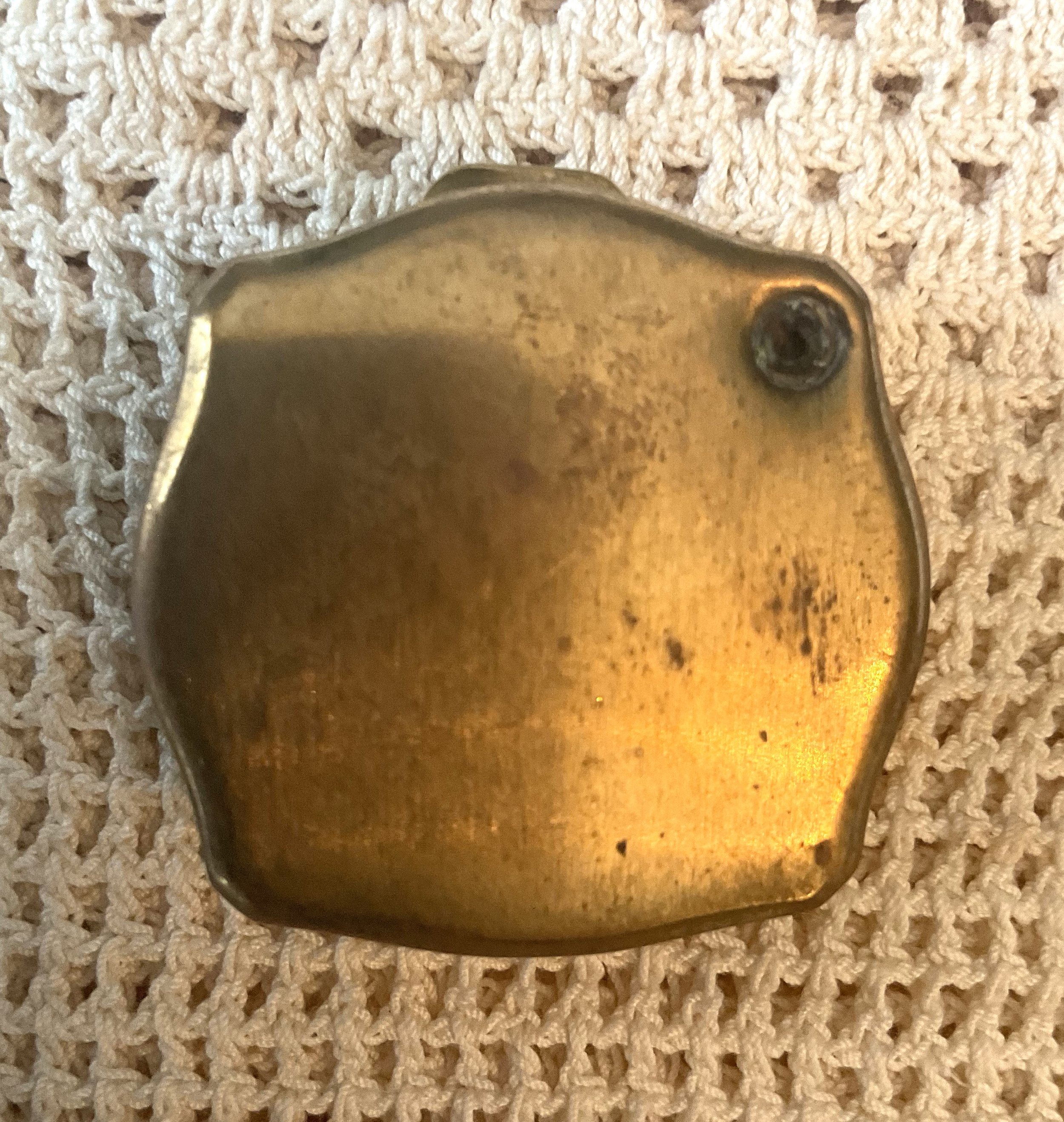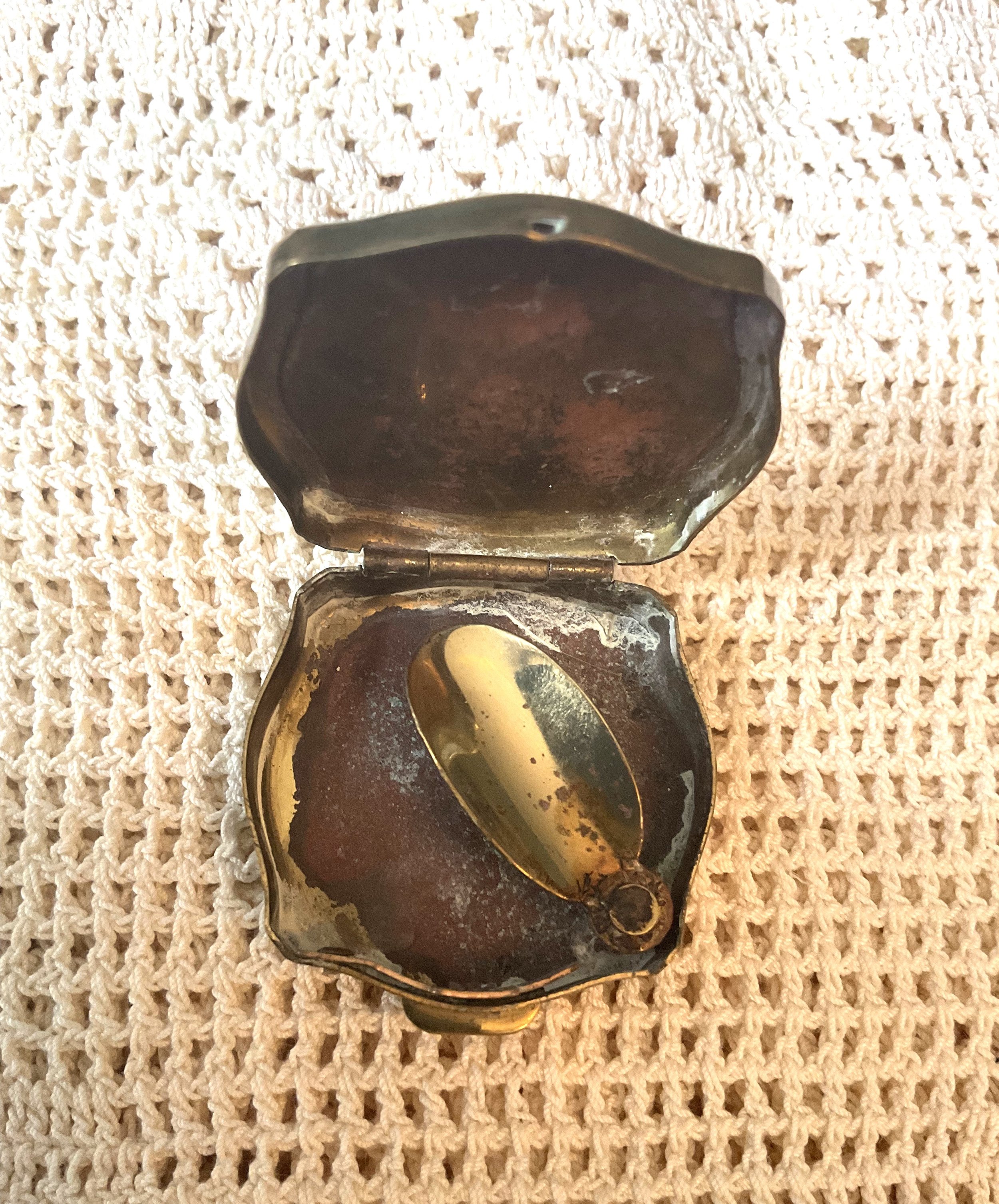 Image 1 of 3
Image 1 of 3

 Image 2 of 3
Image 2 of 3

 Image 3 of 3
Image 3 of 3




Sterling Silver Vesta Case
This gorgeous stirling silver vesta case is in excellent condition. It has an elaborately engaved design ovver it and it has been inscribed ‘H. HARTLEY. 1906’.
In 1832 an Englishman named William Newton patented a match named the wax vesta. The vesta had a tip of phosphorous and a wax stem over cotton threads. They got their name from the Roman goddess of fire. Vesta cases were small containers which housed the friction matches which were quite hazardous and could catch fire without warning. Therefore, vesta cases became a necessity. They not only guarded against accidental combustion; they also kept the matches dry. Vesta cases rose to popularity in the 1800s. They were carried predominantly by men in a waistcoat pocket or on a ‘double Albert’ chain, which held a pocket watch on one side and a vesta case on the other. Usually, the base of a vesta case had a serrated edge known as a ‘striker’. The matches were dragged across the striker to ignite them. A gentleman’s vesta case would reflect his status and he would buy the best he could afford. The simplest form was made of brass, progressing up to silver.
This vesta case measures 4 cms by 3 cms.
This gorgeous stirling silver vesta case is in excellent condition. It has an elaborately engaved design ovver it and it has been inscribed ‘H. HARTLEY. 1906’.
In 1832 an Englishman named William Newton patented a match named the wax vesta. The vesta had a tip of phosphorous and a wax stem over cotton threads. They got their name from the Roman goddess of fire. Vesta cases were small containers which housed the friction matches which were quite hazardous and could catch fire without warning. Therefore, vesta cases became a necessity. They not only guarded against accidental combustion; they also kept the matches dry. Vesta cases rose to popularity in the 1800s. They were carried predominantly by men in a waistcoat pocket or on a ‘double Albert’ chain, which held a pocket watch on one side and a vesta case on the other. Usually, the base of a vesta case had a serrated edge known as a ‘striker’. The matches were dragged across the striker to ignite them. A gentleman’s vesta case would reflect his status and he would buy the best he could afford. The simplest form was made of brass, progressing up to silver.
This vesta case measures 4 cms by 3 cms.
This gorgeous stirling silver vesta case is in excellent condition. It has an elaborately engaved design ovver it and it has been inscribed ‘H. HARTLEY. 1906’.
In 1832 an Englishman named William Newton patented a match named the wax vesta. The vesta had a tip of phosphorous and a wax stem over cotton threads. They got their name from the Roman goddess of fire. Vesta cases were small containers which housed the friction matches which were quite hazardous and could catch fire without warning. Therefore, vesta cases became a necessity. They not only guarded against accidental combustion; they also kept the matches dry. Vesta cases rose to popularity in the 1800s. They were carried predominantly by men in a waistcoat pocket or on a ‘double Albert’ chain, which held a pocket watch on one side and a vesta case on the other. Usually, the base of a vesta case had a serrated edge known as a ‘striker’. The matches were dragged across the striker to ignite them. A gentleman’s vesta case would reflect his status and he would buy the best he could afford. The simplest form was made of brass, progressing up to silver.
This vesta case measures 4 cms by 3 cms.





























